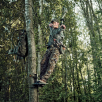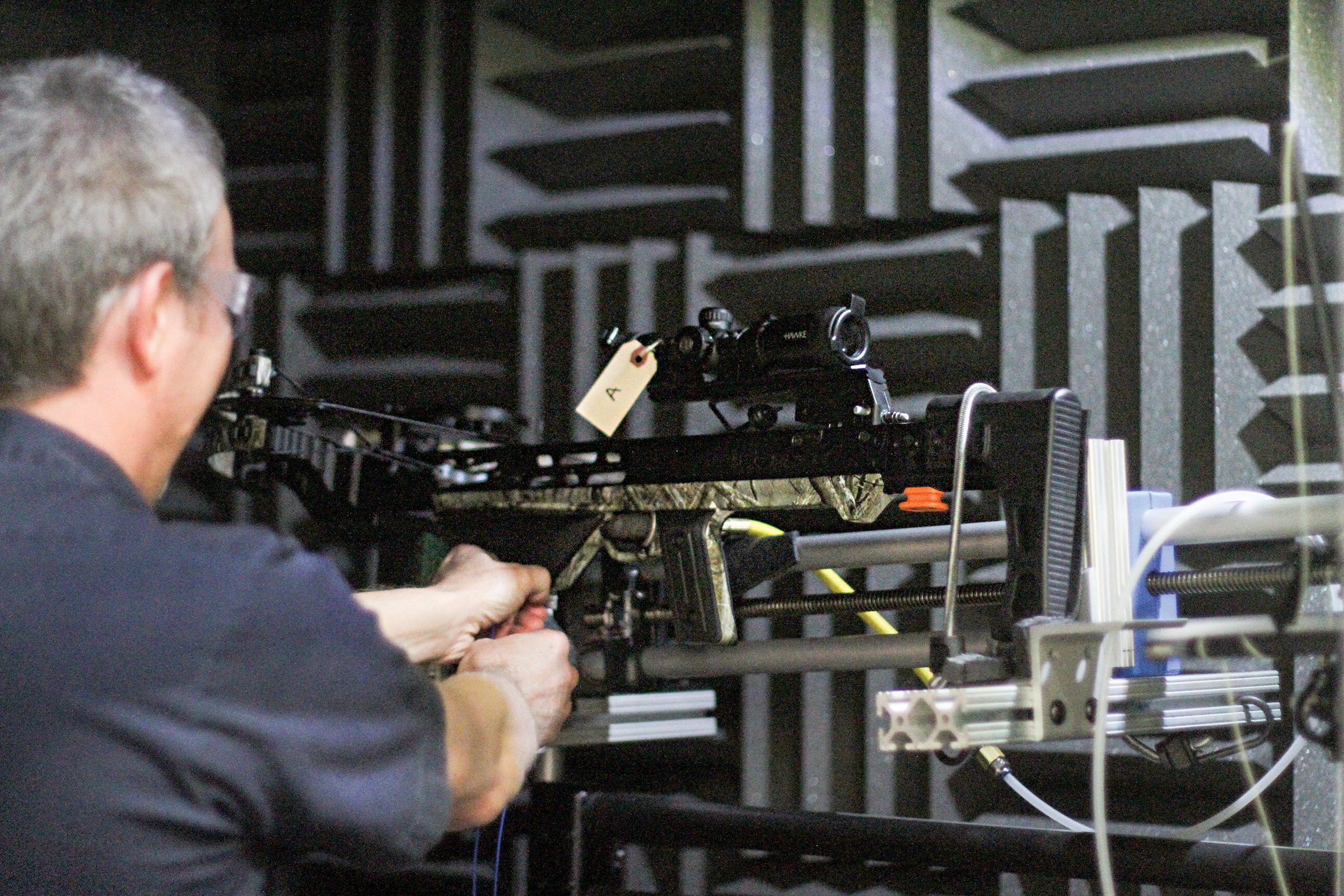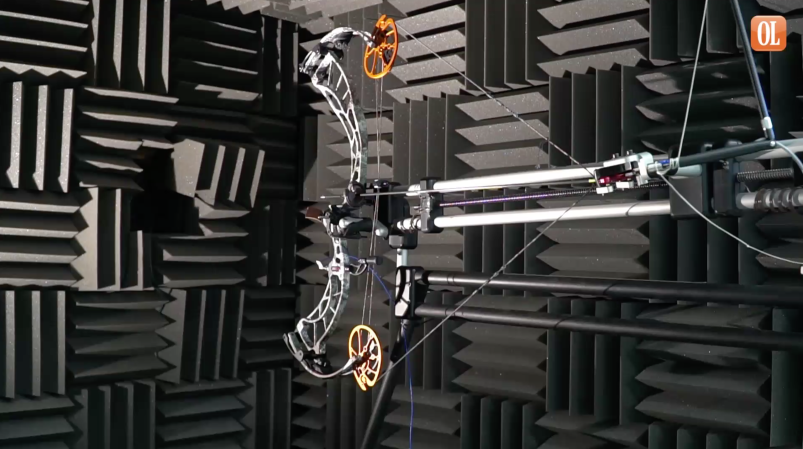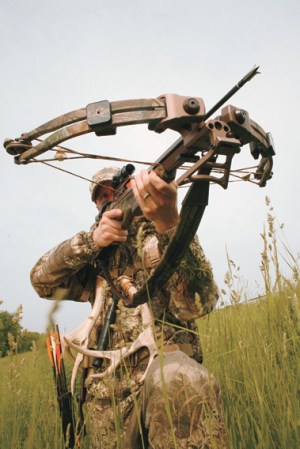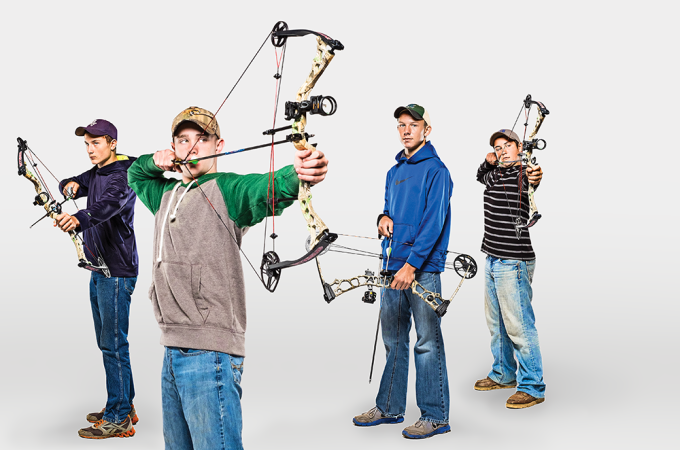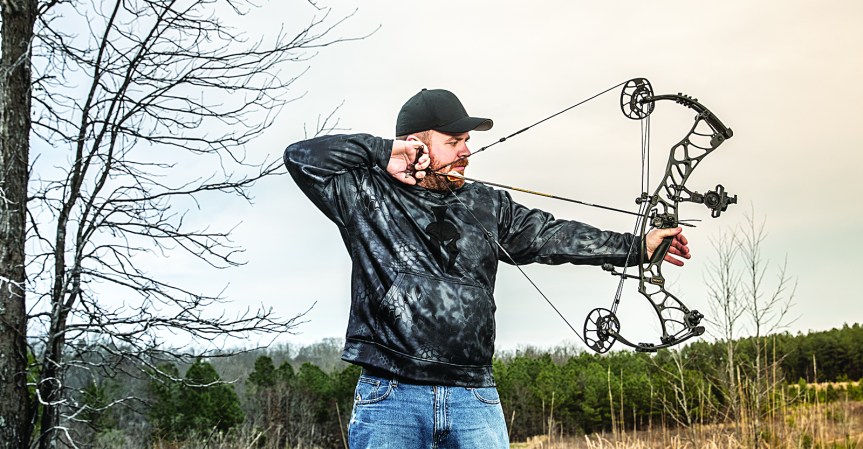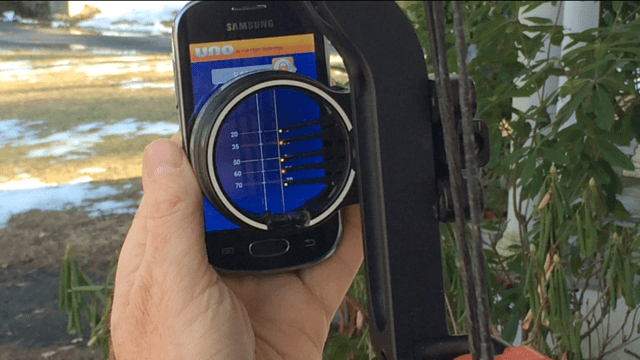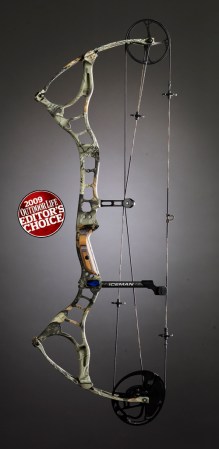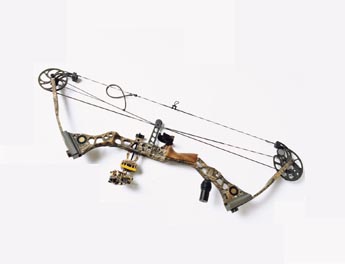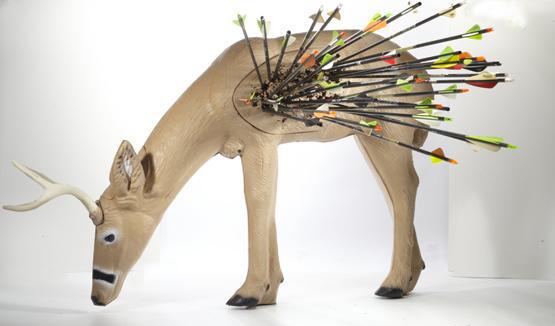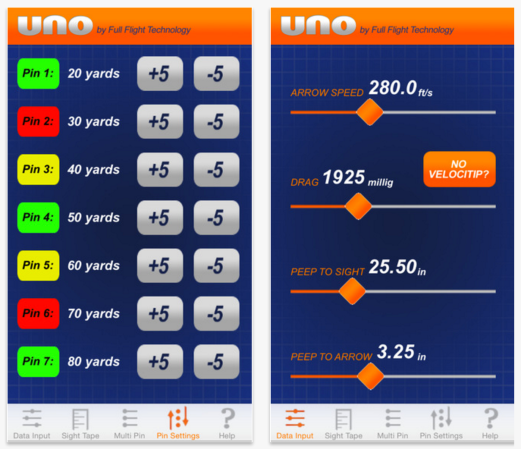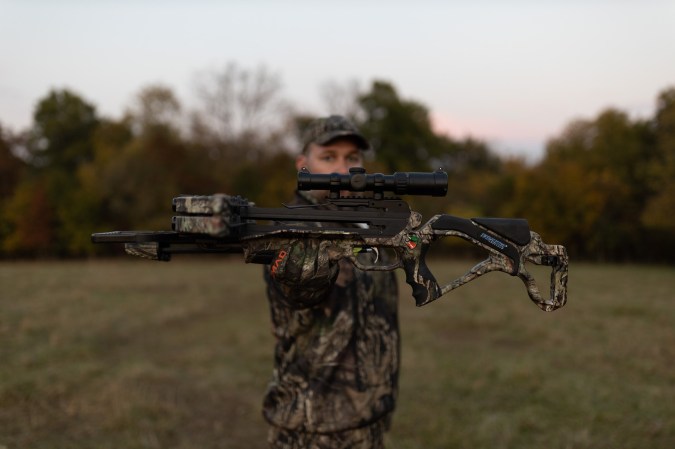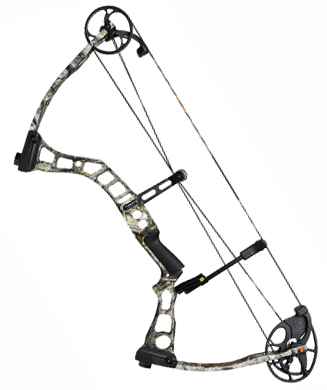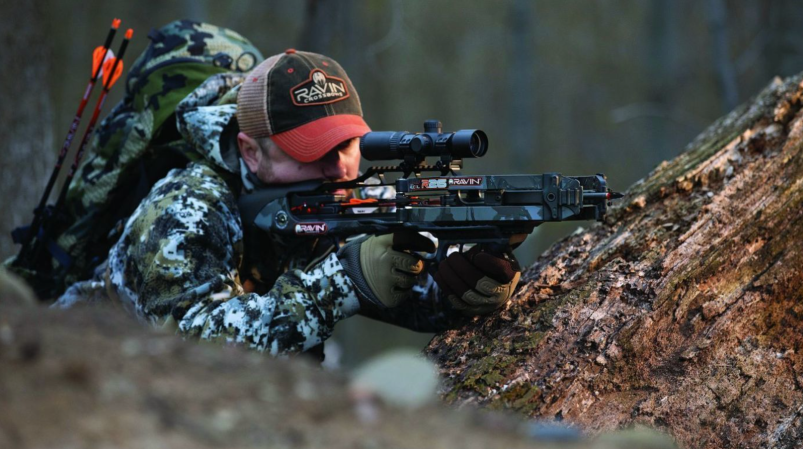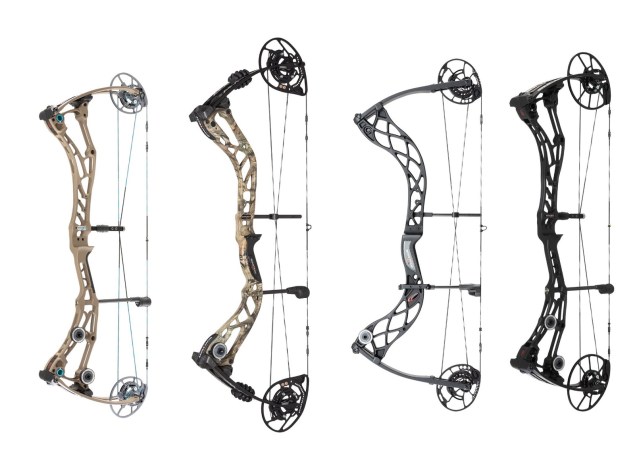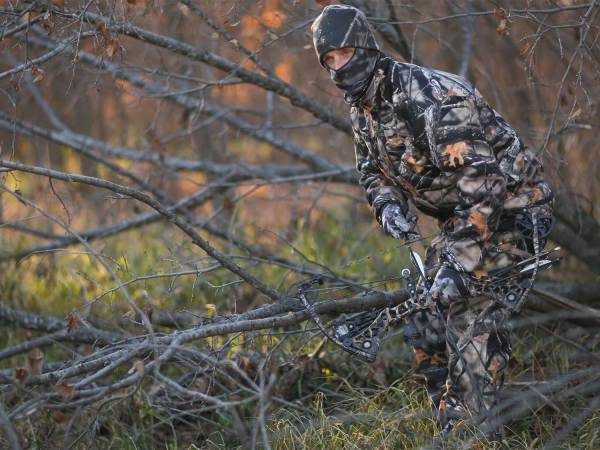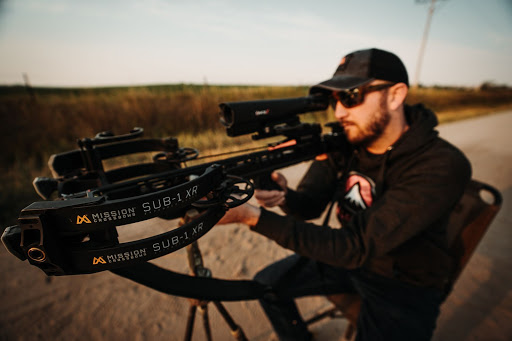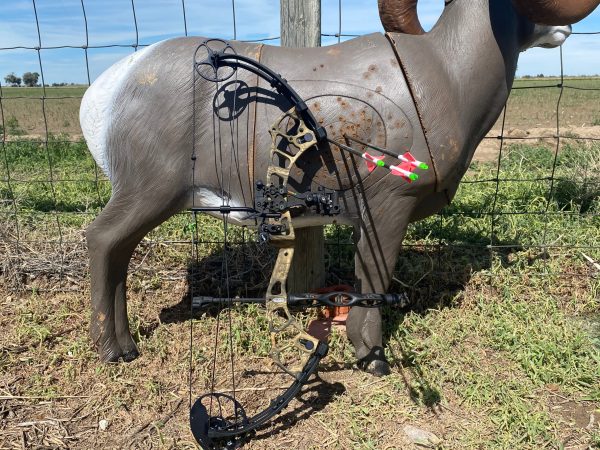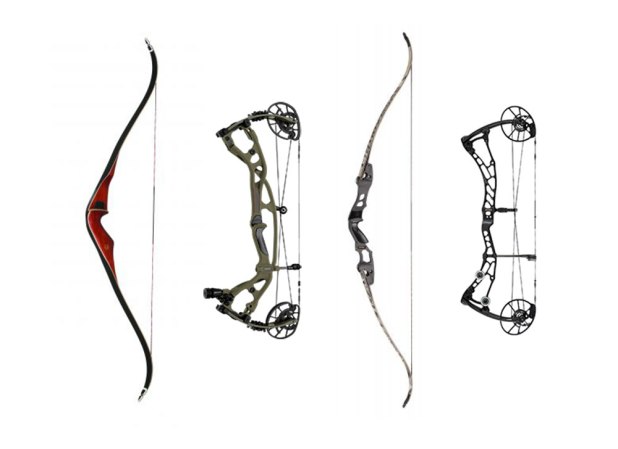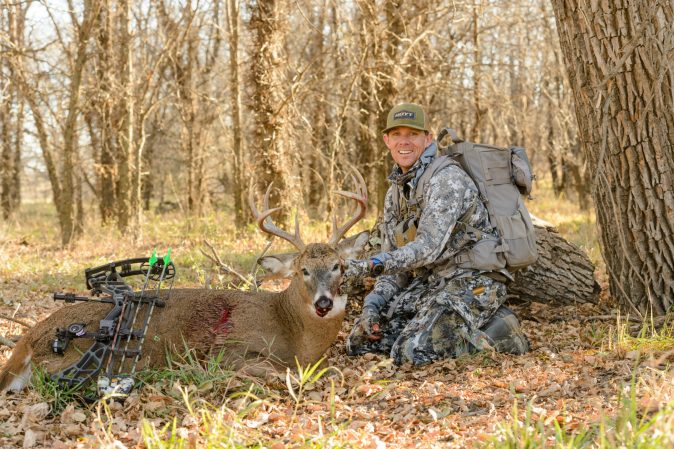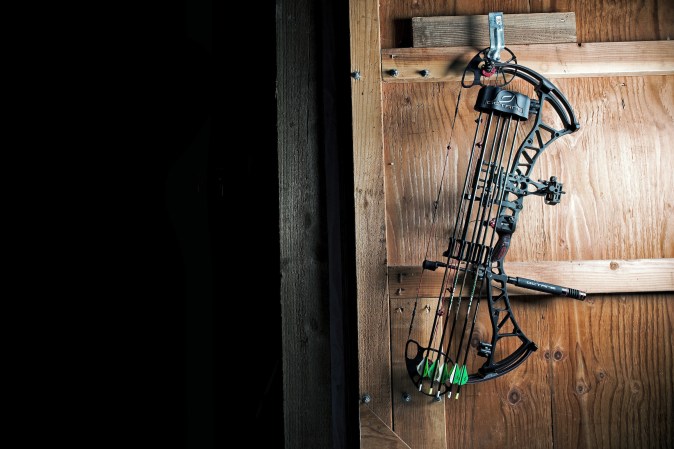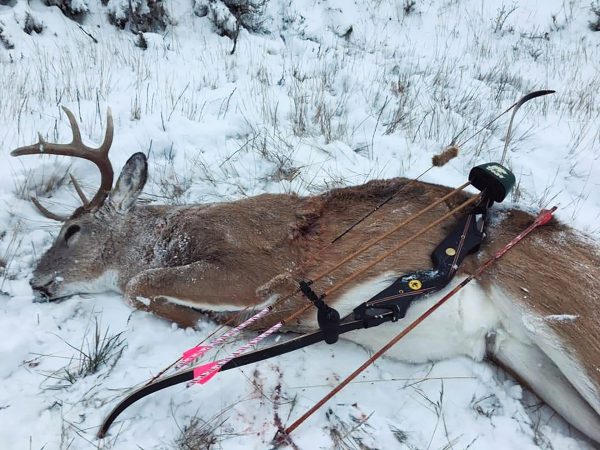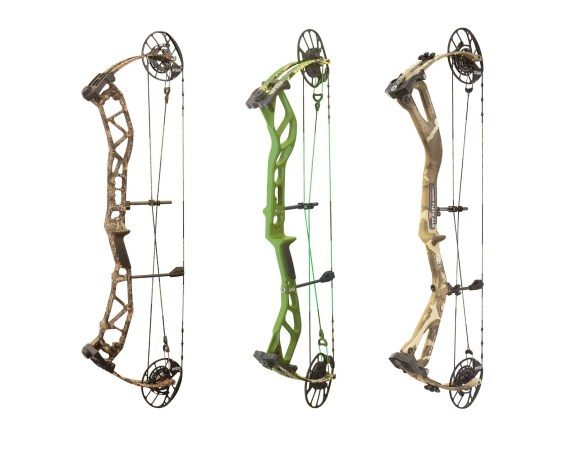We may earn revenue from the products available on this page and participate in affiliate programs. Learn More ›
We dedicated long days and late nights to our most exhaustive bow test yet. Here’s a breakdown of how we arrived at our scores. Also, for any hunters wondering why a particular model is missing from our test, keep in mind that our annual test (like our other gear tests) is an invitational. Manufacturers were invited to submit one compound and/or one crossbow of their choice as long as it was new for 2017.
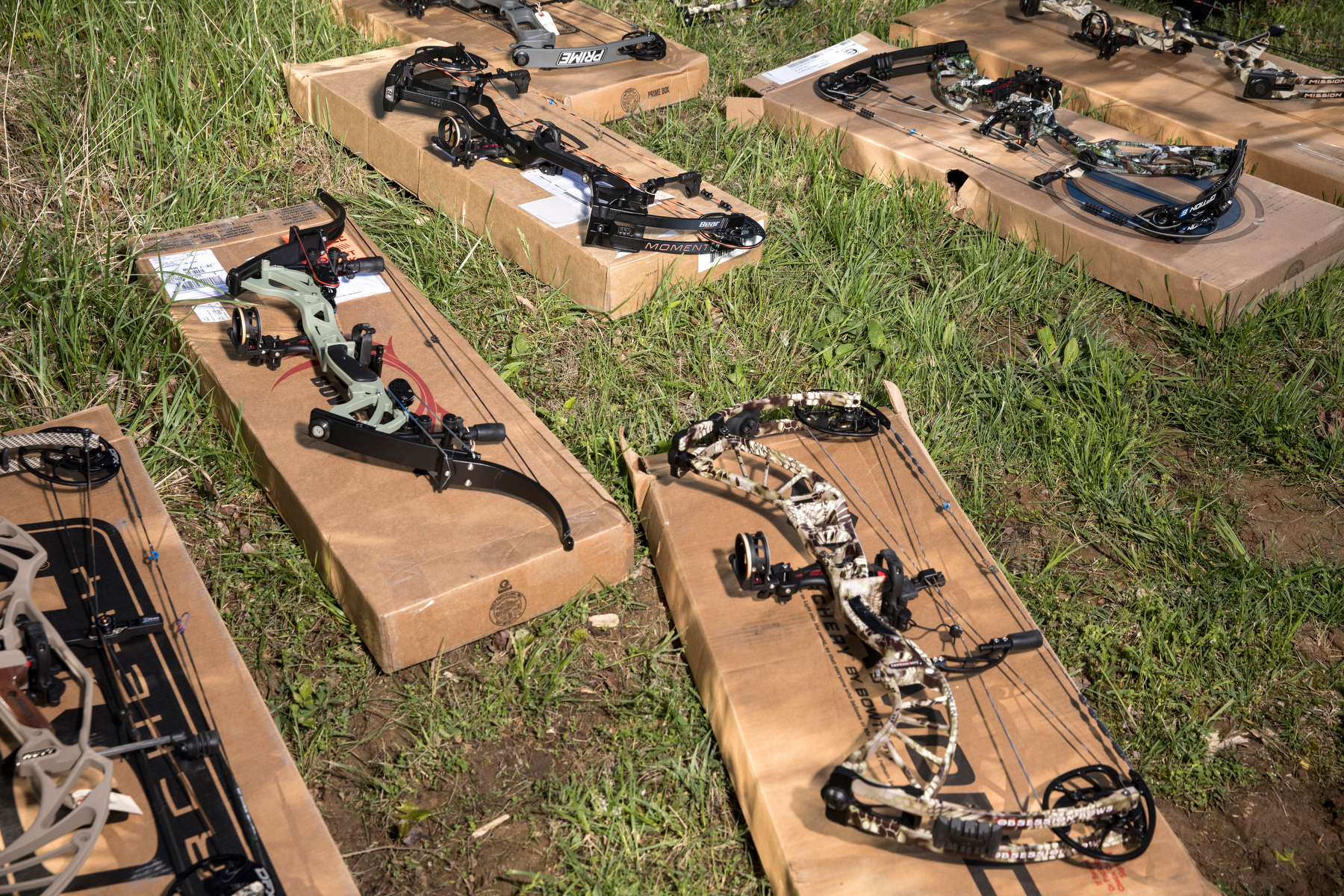
OBJECTIVE TESTING
This year, we partnered with Stress Engineering Services, a versatile firm that tests everything from treestands to rifle recoil at its Ohio-based Outdoor Division. Stress and our team evaluated each submission for arrow speed, noise, and vibration. Data was collected as both compounds and crossbows were fired off a remotely triggered Hooter Shooter in a semi-anechoic (echo-free) chamber.
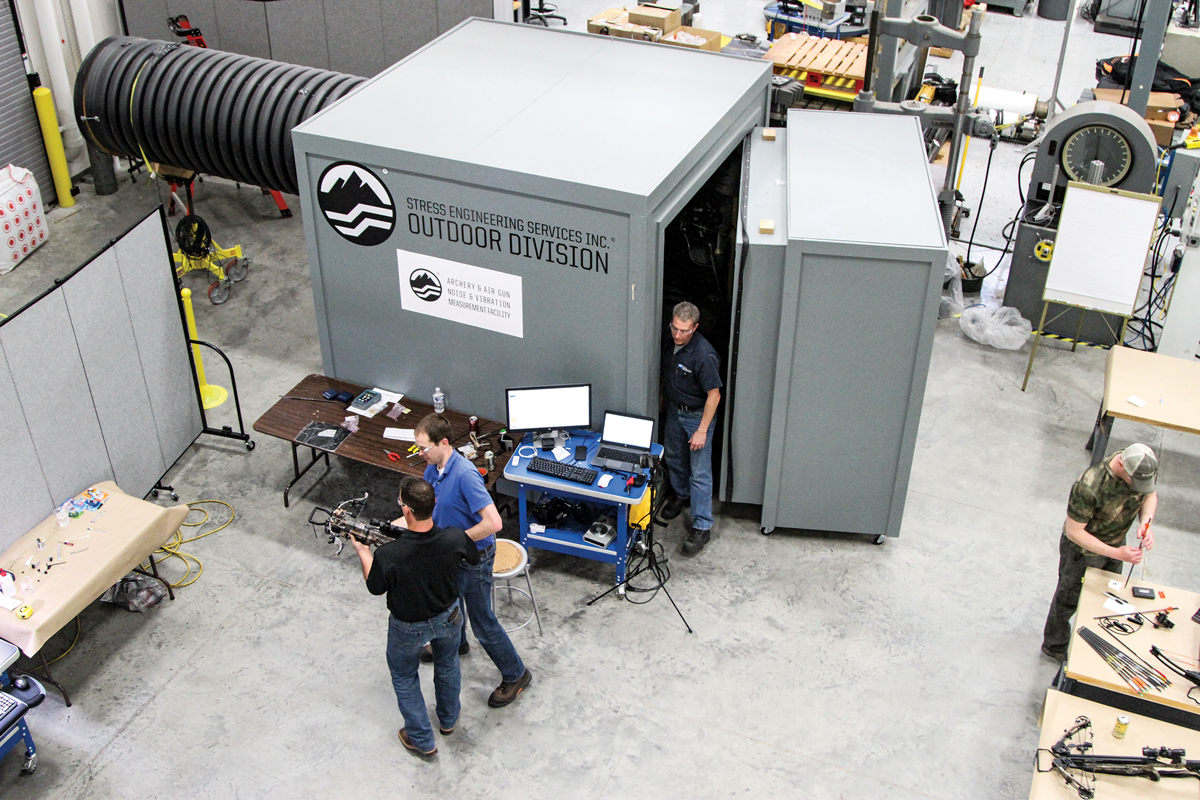
Speed was calculated by analyzing high-speed video footage. Each model was recorded firing an arrow against a backing board covered in lines spaced at 1-inch intervals. Frame-by-frame analysis was used to calculate velocity at launch. Each compound was set at the IBO standard 30-inch draw length and 70-pound draw weight.
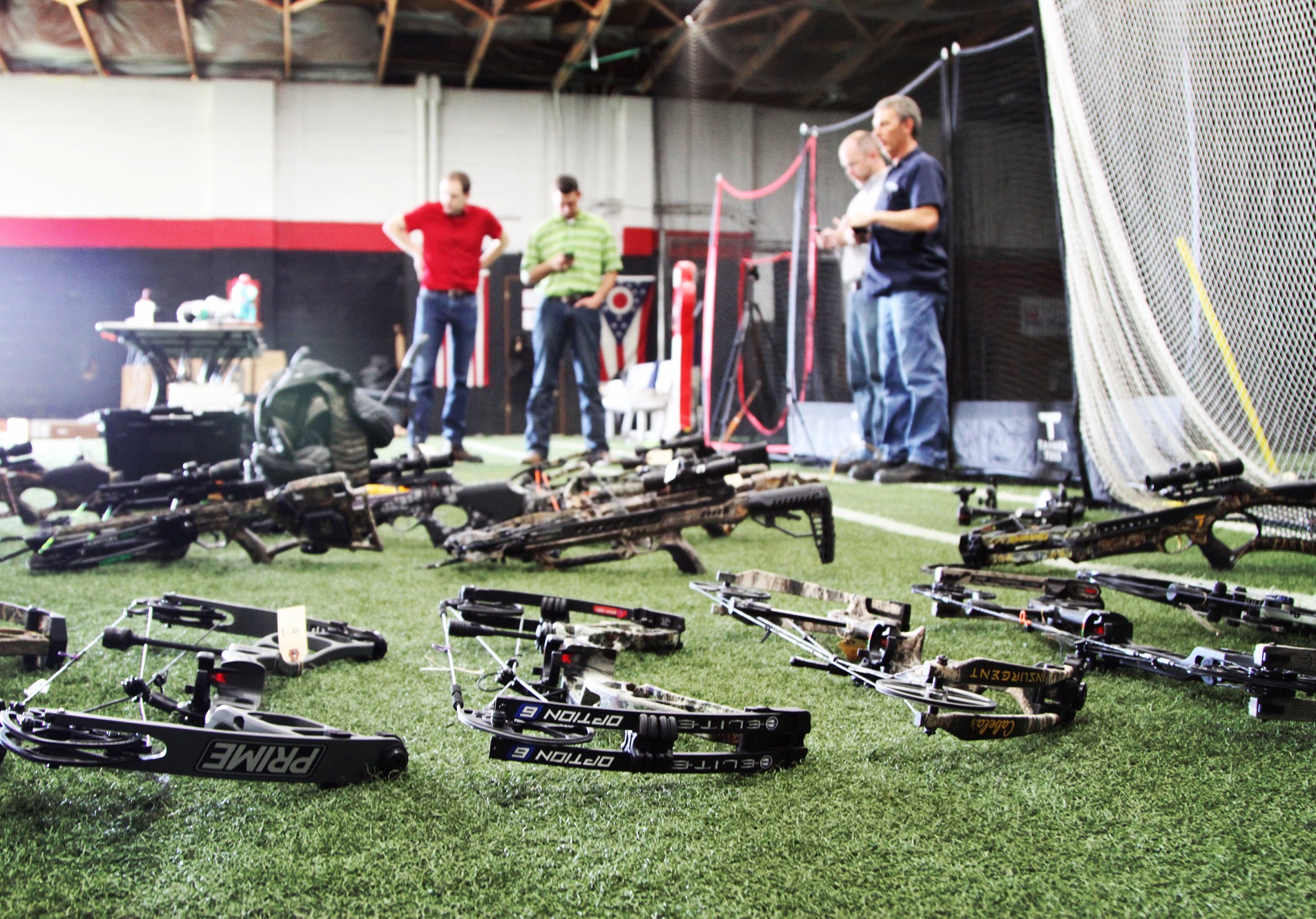
For the arrows, however, we deviated from our past use of the industry-standard IBO arrow (300 grains) to hunting-weight arrows (Victory Archery VAP Elite shafts at 423 grains) to evaluate more realistic field velocities. We measured crossbow speeds with various arrows (each crossbow required a specific nock type and shaft length), although they all weighed between 420 and 430 grains. Noise levels were recorded with microphones in the semi-anechoic chamber. Raw acoustic data was filtered to account for how the human ear perceives sound.
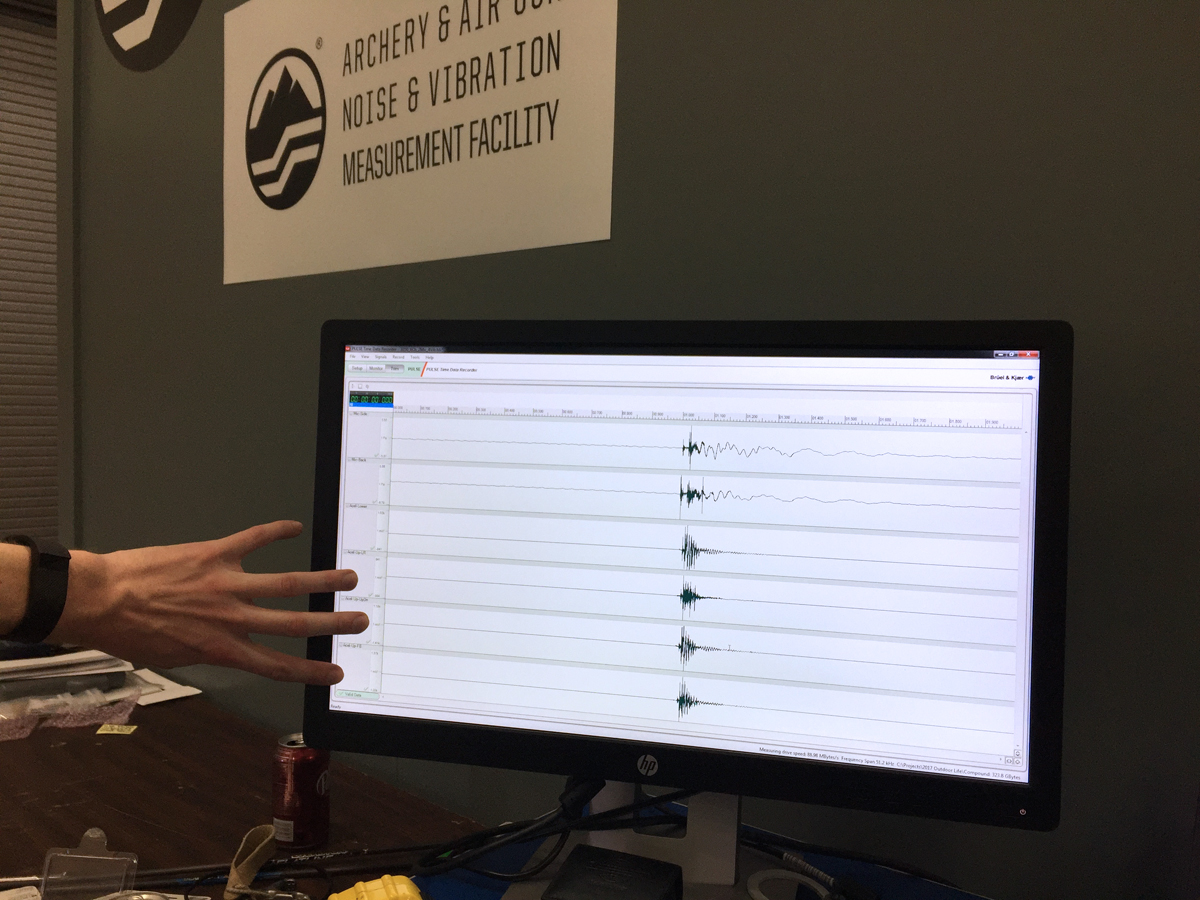
Vibration was measured with micro accelerometers glued to the risers, grips, and stocks, and the data was filtered using a hand-arm perception filter (which accounts for how humans feel vibration when shooting a bow).
We ensured all data was analyzed under brand-blind conditions to eliminate potential bias. Similarly, our field testers completed their subjective evaluations of each bow before reviewing the objective results.
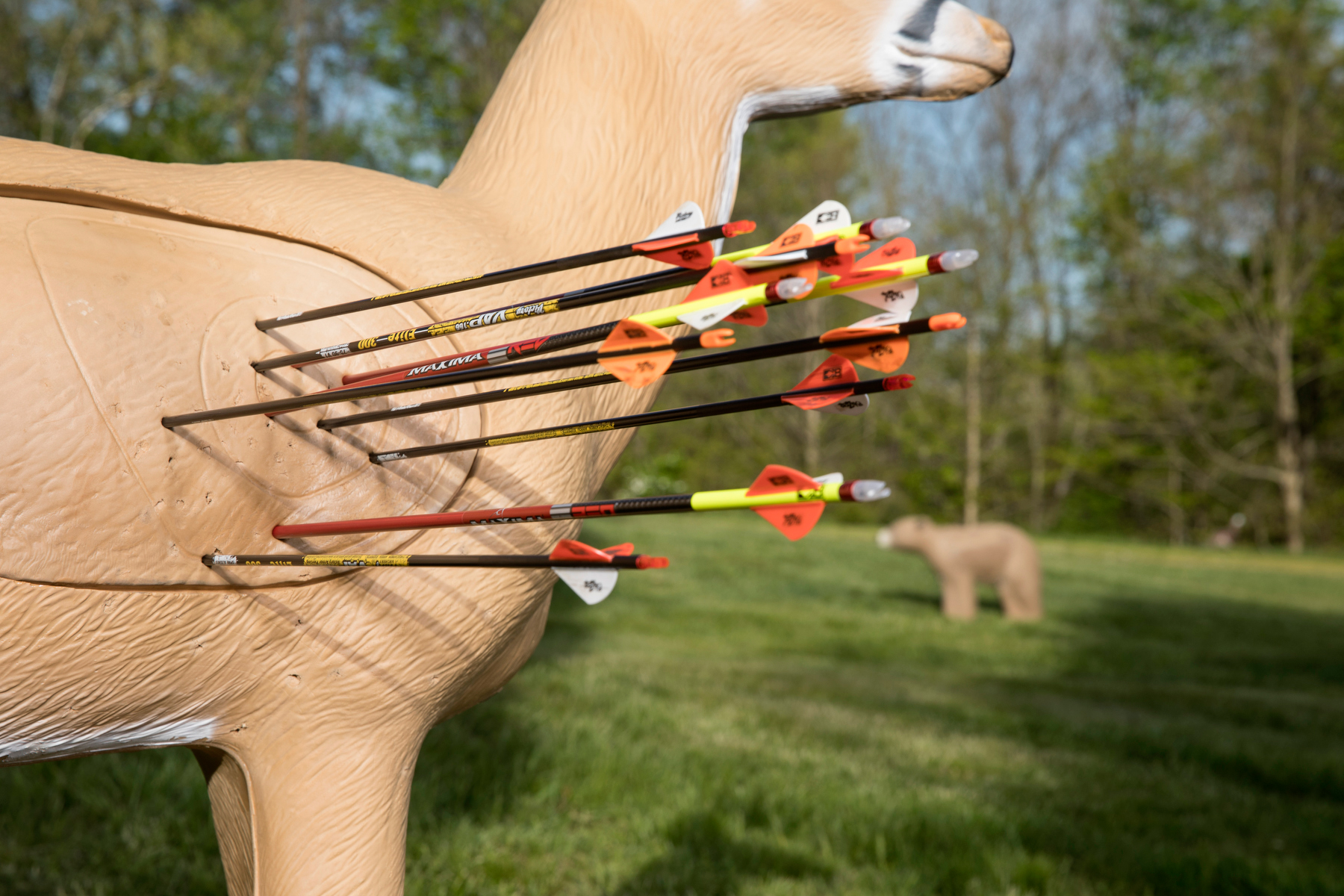
SUBJECTIVE TESTING
▪ For the in-field evaluation, we gathered in southern Indiana, where we used Rinehart targets to design a 3D course that required shots from varying distances and vantage points, including from ladder and climbing stands, a ground blind, and seated and standing positions. Here’s an overview of the categories:
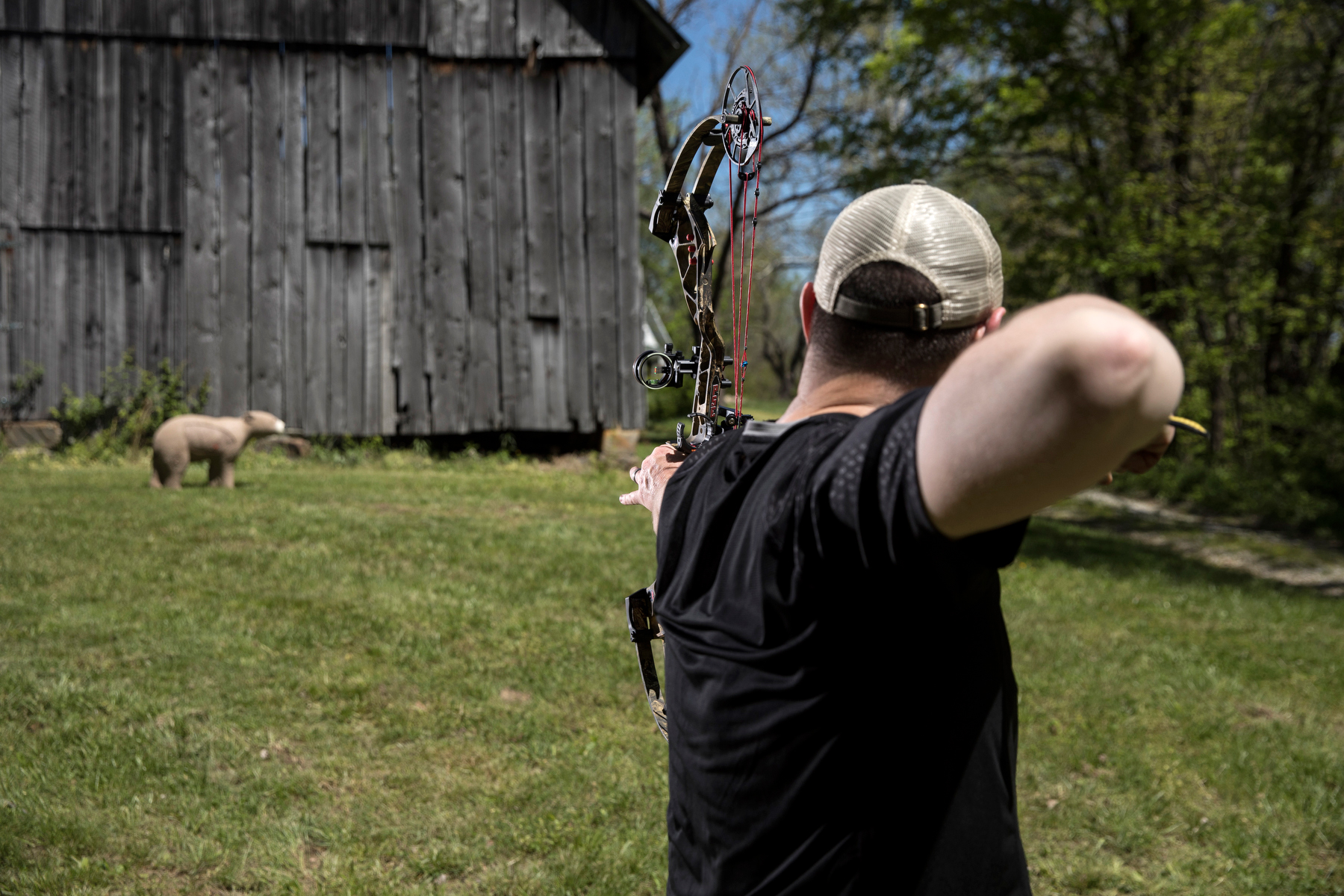
Draw cycle/back wall evaluates a compound’s overall feel throughout the draw curve. Each model’s back wall and valley were analyzed after letoff.
Cocking addresses both ease and safety of cocking a crossbow, as well as any de-cocking functionality.
Trigger/safety evaluates a crossbow’s trigger break and the safety’s design and function.
Versatility reflects a crossbow’s applicability for various hunting and shooting scenarios.
Handling is an assessment of each model’s balance, hold comfort, and overall ergonomics.
Shootability is a measure of how well each model points, holds on target, fires, and groups.
Huntability applies shootability to the field. This is where the treestand and ground blind performance of each bow is assessed. Crossbows were evaluated for useful field features like ease of cocking while seated, cocking noise, safety features, and ease of use with shooting sticks.
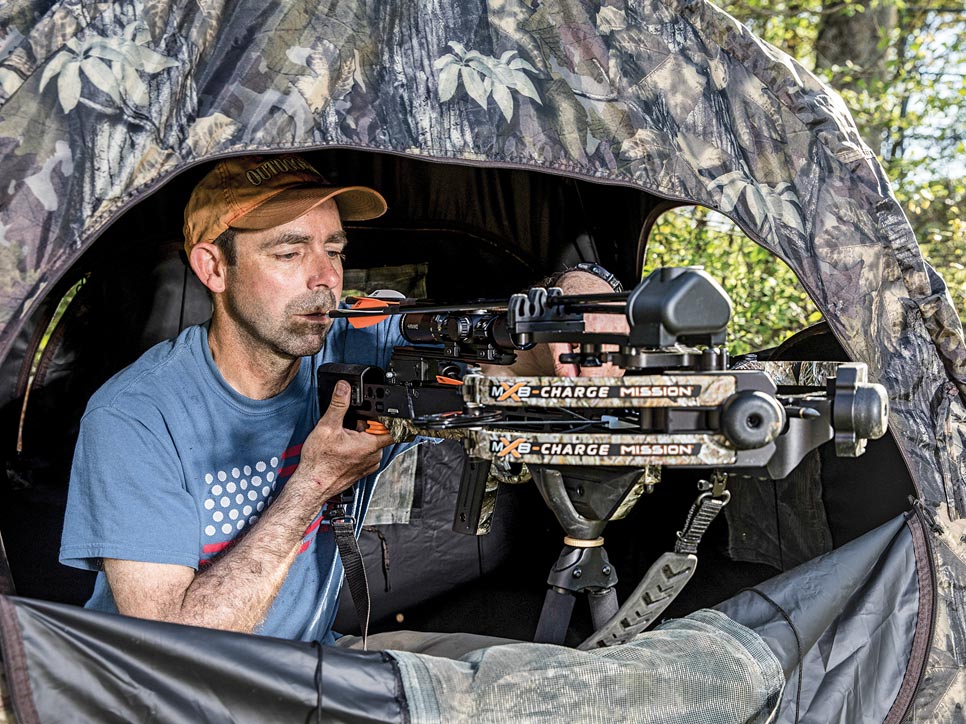
Adjustability represents ease of tuning and range of adjustment (draw length and weight) for compounds.
Build quality judges a bow’s components, its overall fit and finish, and aesthetics.
Value scores reflect the amount of bow you get for the price.
The highest value score in each field typically dictates the Great Buy, although this year we determined that no crossbow represented a remarkable enough value to earn a Great Buy award. We therefore withheld the honor in the crossbow category.
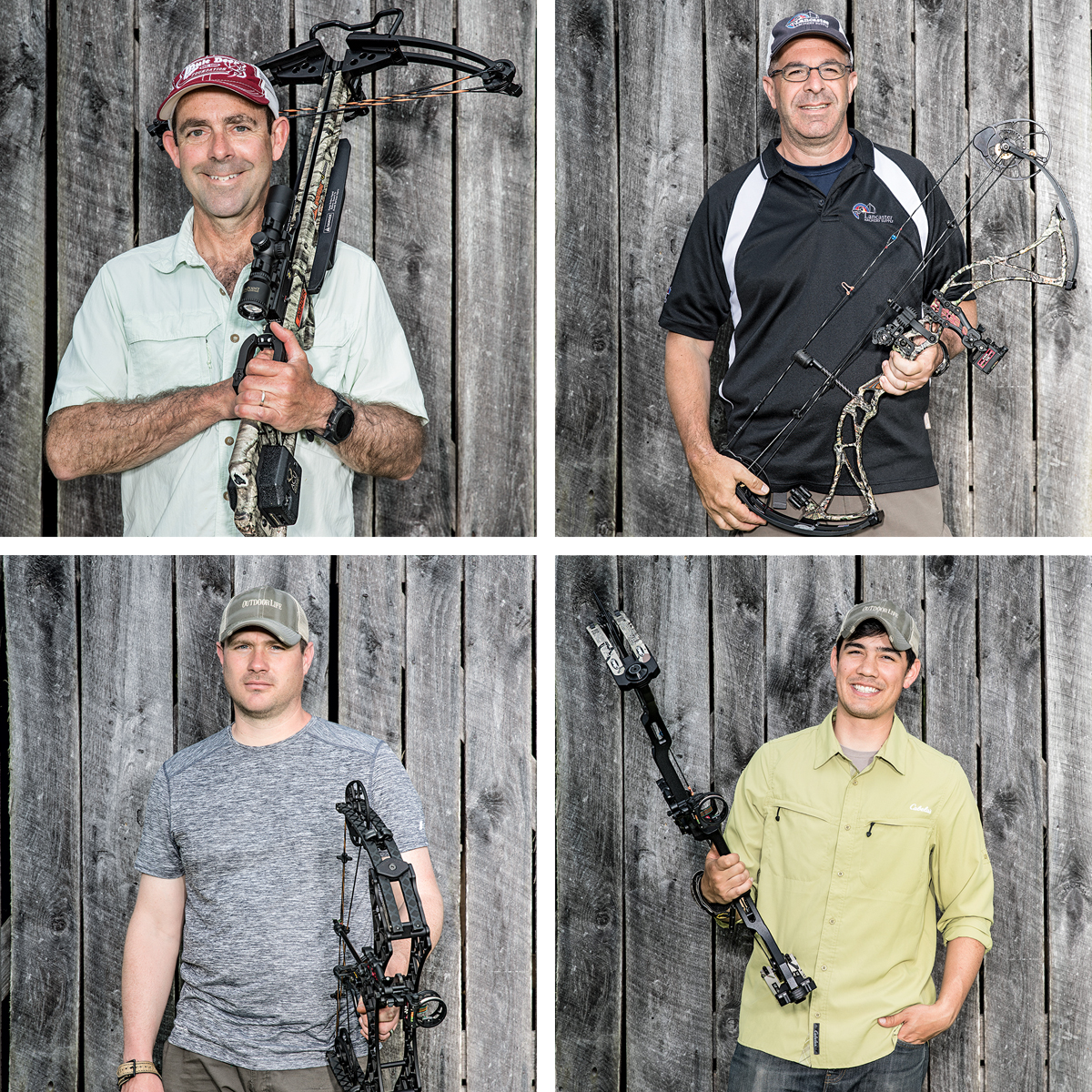
1. Andrew McKean is OL’s editor-in-chief and hunting editor. Despite his love of vertical bowhunting, his lefthandedness prevented him from participating in the compound test. Instead, he took the lead on crossbows. 2. P.J. Reilly is a technical writer and occasional bow tech for Lancaster Archery Supply in Pennsylvania. He has been shooting, competing with, and working on bows since 1990. 3. Tony Hansen is OL’s assistant editor, the bow test team captain, and a Michigan bowhunter. He served as bow tech for this test, mounting more sights, tuning more bows, and shooting more arrows than he cares to remember. 4. Alex Robinson is OL’s online editor, a regular OL gear tester, and a Minnesota-based bowhunting addict.
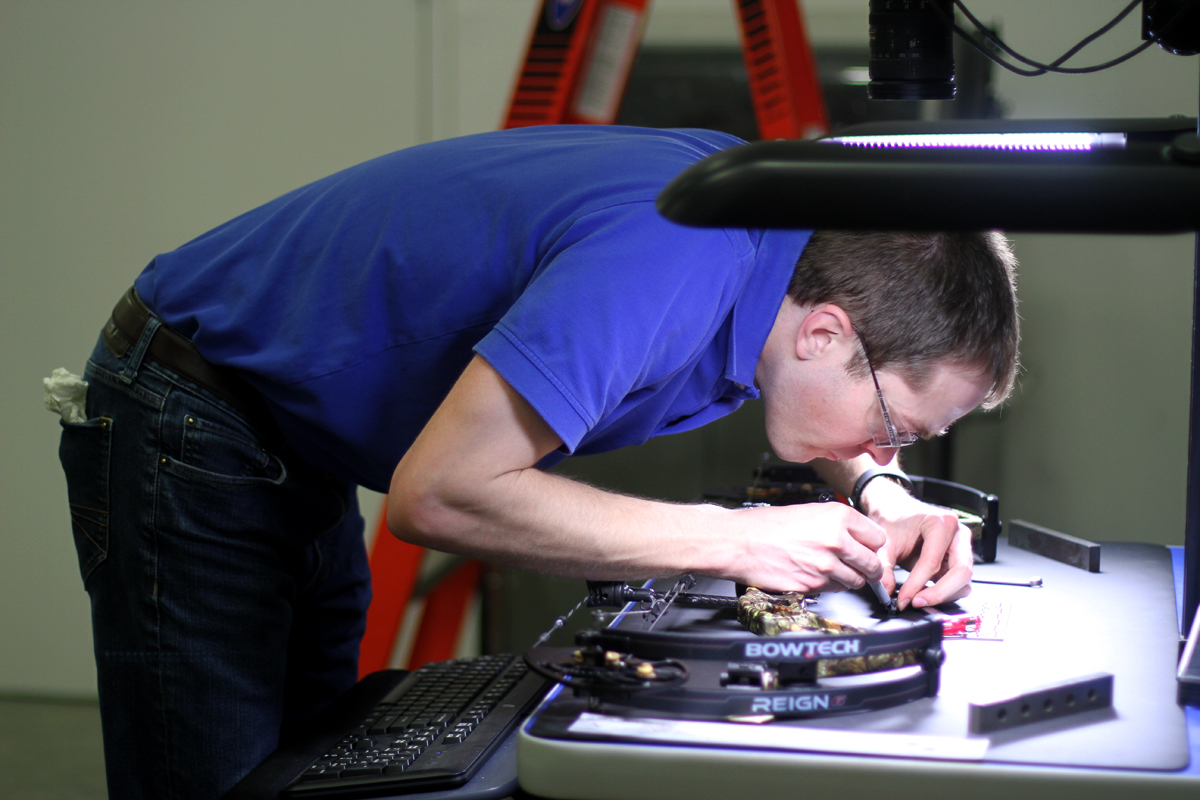
Special thanks to Stress Engineering for objective testing: Matthew Berrey, Rich Chomick, Jacob Cress, Patrick Harrell, Clint Haynes, Dan Morrow, Jeff Osburne, and Ray Newman.
RELATED: 5 Things I Learned at the 2017 Outdoor Life Bow Test
